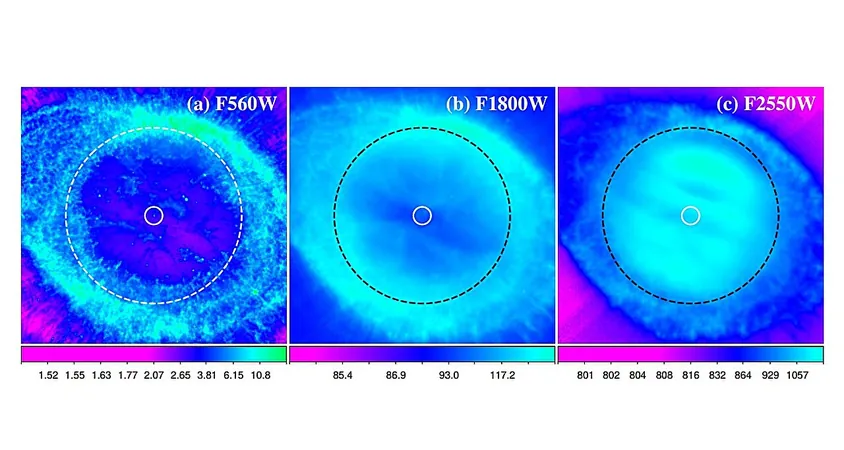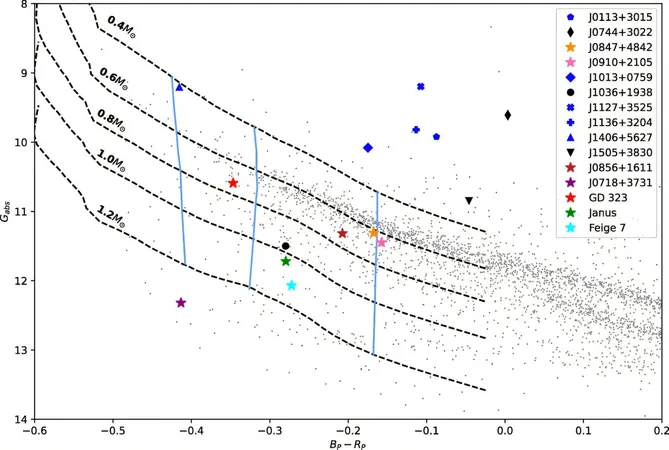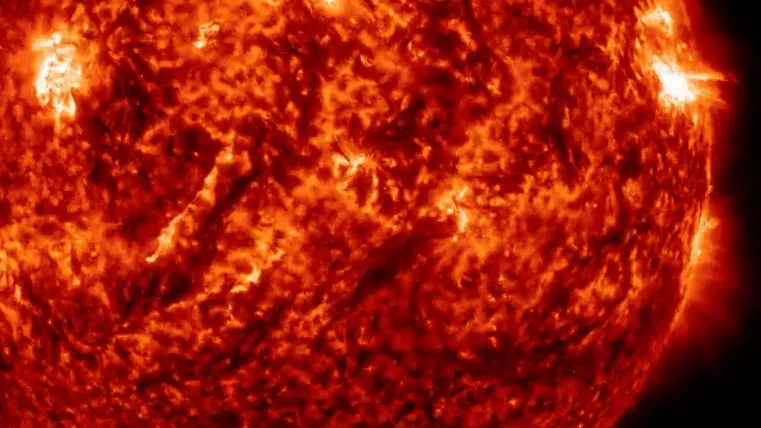
Discovering Cosmic Dust: JWST Unveils Mysteries of the Ring Nebula
2025-04-09
Author: Wei
Astronomers Uncover Dusty Secrets in the Ring Nebula
In a groundbreaking discovery, the James Webb Space Telescope (JWST) has captured stunning new data revealing a dusty disk surrounding the central star of the enchanting Ring Nebula, also known as Messier 57 or NGC 6720. This revelation comes from a team of international astronomers led by Raghvendra Sahai from NASA's Jet Propulsion Laboratory, detailed in a recent study.
A Stellar Evolution Marvel
Planetary nebulae, like the Ring Nebula, are fascinating cosmic phenomena that form when stars shed their outer layers during their transition from main sequence stars to red giants and ultimately white dwarfs. These nebulae are exceptional for astronomers studying the intricate chemical evolution of stars and galaxies.
A Classic Cosmic Figure
First discovered in 1779, the Ring Nebula stands out in the constellation of Lyra, lying approximately 2,570 light-years from Earth. Its iconic elliptical shape stretches about 1.3 light-years across, making it one of the quintessential examples of a planetary nebula.
The Central Star's Revelation
At the heart of the Ring Nebula is a star on its way to becoming a white dwarf, characterized by a mass of around 0.61 solar masses and an astonishing effective temperature of about 135,000 K. This star predominantly consists of carbon and oxygen, encased in a delicate outer layer of lighter elements.
Unveiling the Dusty Disk
Utilizing JWST's advanced Near-Infrared Camera (NIRCam) and Mid-Infrared Instrument (MIRI), the research team observed unusual emissions in the nebula. Their findings revealed extended excess emissions at wavelengths above 5.0 µm, leading them to conclude that a compact dust cloud disk, roughly 2,600 AU in size and composed of small amorphous silicate grains, is orbiting around the central star.
Cosmic Variables and Companions
The central star of the Ring Nebula boasts an impressive luminosity of 310 times that of the Sun, and intriguingly, it exhibits notable variability. Researchers hypothesize that this variability may stem from a nearby main-sequence dwarf companion star weighing less than 0.1 solar masses.
A Glimpse into the Past
The presence of the dust cloud enlightens astronomers about the evolutionary history of the central star, suggesting that it may be a remnant of material from a binary interaction earlier in its life—the remnants of a once-robust disk that has since largely dissipated.
Unlocking Cosmic Mysteries
This pioneering research not only sheds light on the processes governing stellar evolution but also enhances our understanding of the intricate dance of light, dust, and gas in the cosmos. As JWST continues to explore the universe, who knows what other cosmic secrets may soon be unveiled?




 Brasil (PT)
Brasil (PT)
 Canada (EN)
Canada (EN)
 Chile (ES)
Chile (ES)
 Česko (CS)
Česko (CS)
 대한민국 (KO)
대한민국 (KO)
 España (ES)
España (ES)
 France (FR)
France (FR)
 Hong Kong (EN)
Hong Kong (EN)
 Italia (IT)
Italia (IT)
 日本 (JA)
日本 (JA)
 Magyarország (HU)
Magyarország (HU)
 Norge (NO)
Norge (NO)
 Polska (PL)
Polska (PL)
 Schweiz (DE)
Schweiz (DE)
 Singapore (EN)
Singapore (EN)
 Sverige (SV)
Sverige (SV)
 Suomi (FI)
Suomi (FI)
 Türkiye (TR)
Türkiye (TR)
 الإمارات العربية المتحدة (AR)
الإمارات العربية المتحدة (AR)